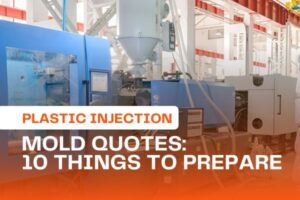3 Plate Mold
Introduction
Injection molding, a staple in the manufacturing industry, provides a plethora of techniques and tools for producing parts that meet a broad spectrum of requirements. Among these tools, the 3-plate mold stands distinct due to its unique construction and features. Comprising three distinct plates – the moving plate (A plate), the floating plate (B plate), and the fixed plate (C plate) – the 3-plate mold brings several advantages to the table, along with some notable drawbacks. Here we dive into these aspects and identify the ideal use cases for this versatile tool.
Advantages of 3-Plate Molds
- Greater Design Flexibility: The 3-plate mold, with its additional components, offers unparalleled design flexibility. It can accommodate an array of multiple cavities and allows for more gate locations, making it possible to produce parts with various and complex shapes and sizes. This flexibility often makes the 3-plate mold a go-to choice for intricate design requirements that cannot be met by simpler molds.
- Automatic Degating: One of the standout features of the 3-plate mold is its ability to separate the parts from the runner system automatically during the molding process. This automatic degating proves to be a significant efficiency booster by reducing manual labor involvement in part removal, subsequently leading to uniformity and consistency in the output.
- Increased Precision: The sophistication in the 3-plate mold's design facilitates greater accuracy in the final molded parts. This heightened precision can be particularly advantageous for applications where there is little to no margin for error, thus demanding superior accuracy.
Disadvantages of 3-Plate Molds
- Higher Costs: The increased complexity and precision of the 3-plate mold mean it is more expensive to design and manufacture than its simpler counterparts. These heightened costs can pose challenges for small-scale projects or for those with strict budget constraints, making it a less feasible option.
- Longer Cycle Times: Due to the additional steps involved in the 3-plate molding process, it inherently has longer cycle times. While this may not be an issue for all projects, for high-volume production requirements, this could potentially impact overall efficiency and project timelines.
- Increased Maintenance: The complexity of a 3-plate mold necessitates frequent maintenance and a deep understanding of its operation. This may lead to higher ongoing costs and necessitate specialized training, adding another layer of consideration before opting for this type of mold.
Ideal Use Cases for 3-Plate Molds
- Complex Part Design: 3-plate molds shine when it comes to complex part designs. If the part design involves intricate features, multiple cavities, or unconventional shapes, a 3-plate mold is an excellent choice. Its flexible design can accommodate an extensive variety of part geometries, thus allowing manufacturers to meet unique design specifications.
- Automatic Degating Requirement: If a project could significantly benefit from automatic degating due to the scale of production or labor considerations, a 3-plate mold is an ideal fit. This feature can drastically improve efficiency, reduce manual labor costs, and ensure a consistent output - a boon for large-scale manufacturing projects.
- High Precision Requirements: For projects where molded parts must meet high precision standards, the 3-plate mold's ability to deliver accurate results is a distinct advantage. Industries such as aerospace, medical devices, and precision engineering, where the margin for error is minimal, often rely on 3-plate molds for their precision requirements.
Conclusion
In the world of injection molding, the 3-plate mold emerges as a versatile tool, offering a host of benefits, including design flexibility, automatic degating, and high precision. However, its complexity can translate into higher costs, longer cycle times, and increased maintenance efforts. Therefore, the decision to use a 3-plate mold should be driven by the specifics of the project and the balance between the benefits and drawbacks. By understanding the nuances of this tool, manufacturers can make informed decisions, optimize their production process, and achieve the desired results.




